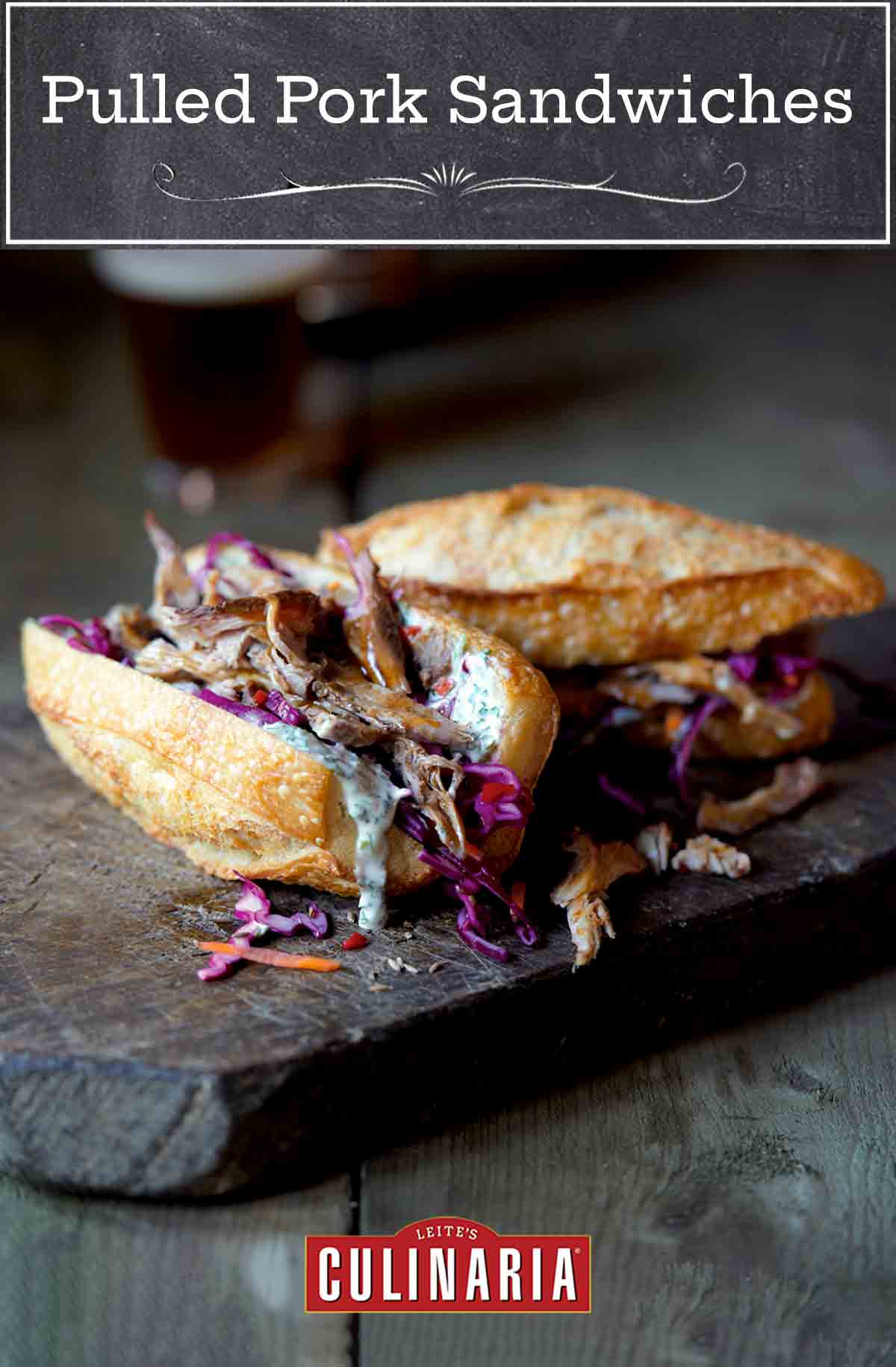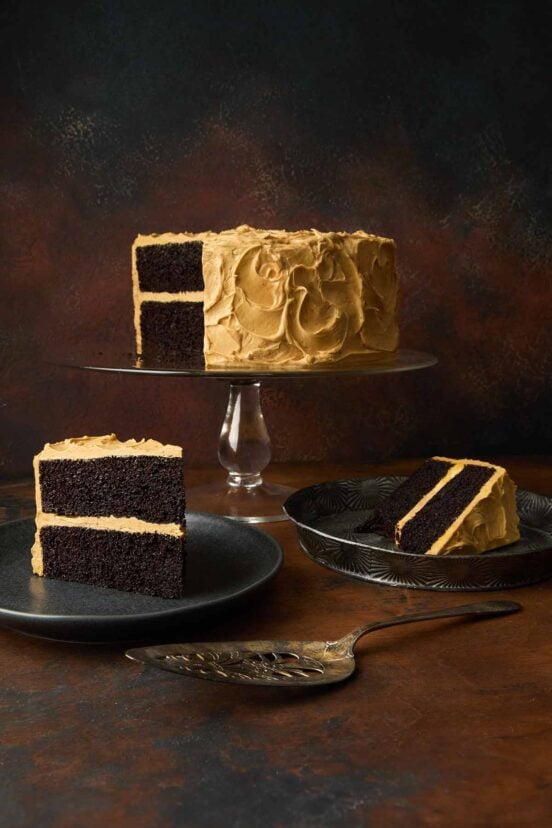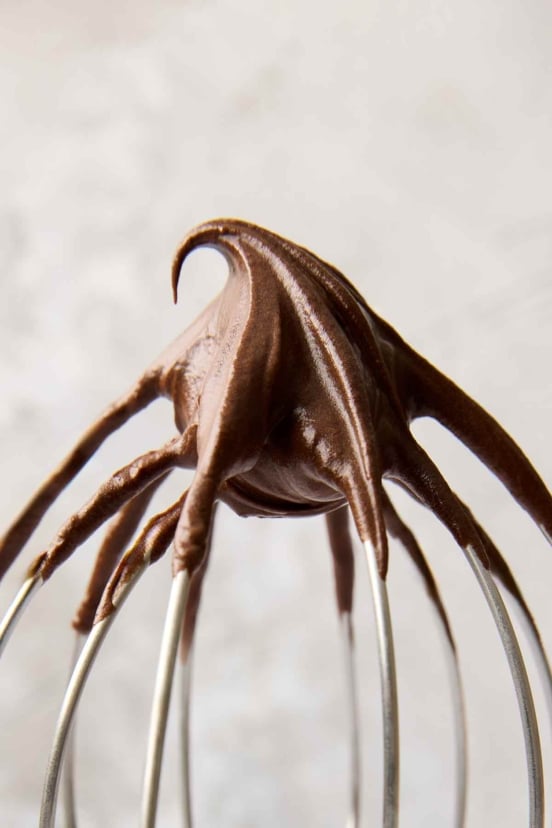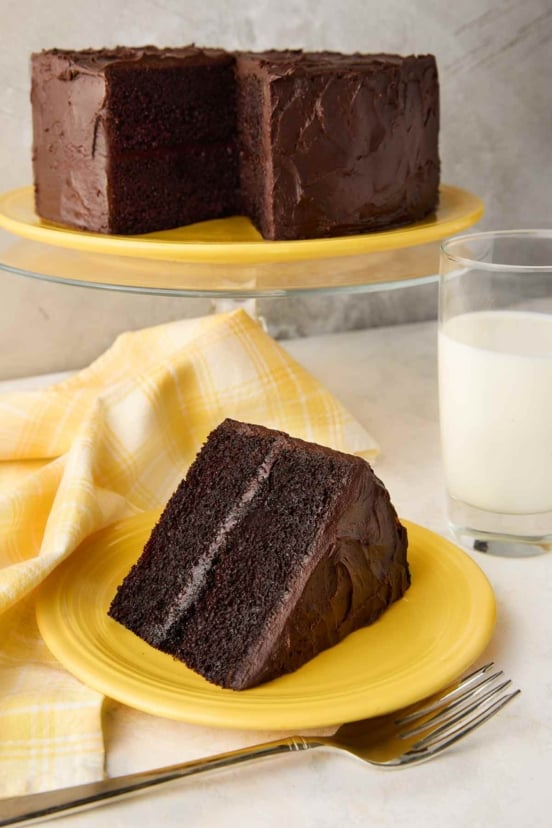
We confess that while these pulled pork sandwiches are incredibly easy to assemble, the pulled pork recipe included below, which works on your grill or smoker, is a little time-consuming. It’s worth it, natch. But here’s the thing. You shouldn’t miss out on this sandwich. So if you prefer your pulled pork sandwiches to come together with a little more ease and a lot less time between craving and consuming, simply substitute another form of pulled pork in its place, including this easy pulled pork recipe that you can make in the oven or the slow cooker. Or, in desperate moments, rely on some takeout from your fave ‘cue joint.–Angie Zoobkoff
WHAT IS A MARINADE INJECTOR AND HOW DO I USE IT?
If you’ve not used an injector before, they’re basically a very large syringe that’s used to squirt marinade under the skin of whatever you’re cooking, getting flavor deeper into the meat. And they’re pretty simple to use–just plunge the needle into the marinade and slowly draw back the plunger. You should see the marinade filling the injector.
Then insert the injector into the pork shoulder and gently press the plunger to release some of the liquid. Repeat at evenly spaced intervals all over the pork until the solution is entirely used up. If the marinade is too pulpy from the ginger and garlic to go through the tip of your injector, dump the marinade in your mini food processor and blend and try again. Some injectors do come with syringe tips that can be swapped out for thicker or chunkier liquids, though.
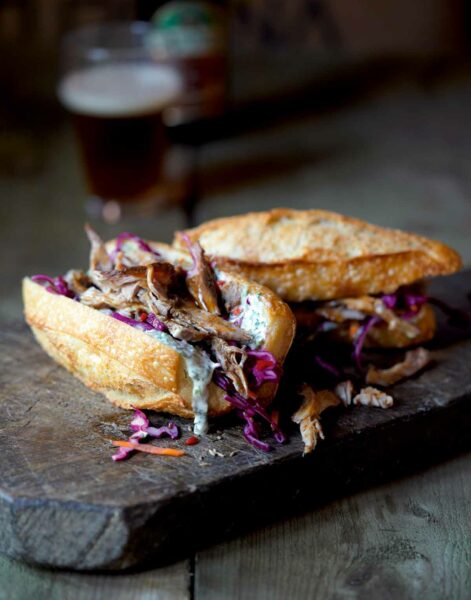
Pulled Pork Sandwiches
Equipment
- marinade injector
Ingredients
For the marinade
- 3 garlic cloves
- One (1- to 2-inch) piece fresh ginger, peeled
- 1 cup apple cider
- 1/4 cup cider vinegar
- 1 teaspoon Tabasco sauce
- 2 tablespoons Worcestershire sauce
- 3 tablespoons soy sauce
- 1 teaspoon freshly grated nutmeg
- 1 teaspoon ground cinnamon
For the rub
- 2 tablespoons cayenne pepper
- 2 tablespoons sweet paprika
- 2 tablespoons dark brown sugar
- 2 tablespoons fine sea salt
For the pulled pork
- One (5 1/2-lb) bone-in pork shoulder
For the coleslaw
- 1 to 2 tablespoons cumin seeds (optional)
- 2 teaspoons granulated sugar
- 2 teaspoons salt
- 2 tablespoons red or white wine vinegar
- 1/2 head green or red cabbage, finely shredded
- 1 carrot, peeled and julienned
- 2 small red bell peppers, seeded and finely chopped (optional)
For the cilantro mayonnaise
- 1 large egg yolk, at room temperature
- 1 3/4 teaspoons fresh lemon juice
- 1/2 teaspoon salt
- 1/4 teaspoon freshly ground black pepper
- 1 cup mild olive oil or vegetable oil
- 2 to 4 tablespoons chopped fresh cilantro, or more to taste
For serving
- 8 to 12 rolls, partially split lengthwise
Instructions
Make the marinade
- Using a fine grater held over a bowl, grate the garlic and ginger into a pulp. Add the cider, vinegar, Tabasco sauce, Worcestershire sauce, soy sauce, nutmeg, and cinnamon and stir to combine. Transfer the marinade to your marinade injector and inject it into the pork.
Make the rub
- In a small bowl, combine the cayenne, paprika, brown sugar, and salt.
Cook the pulled pork
- Rub the pork evenly on all sides with the spice rub. Don’t worry if some of the marinade spills out of the pork where you injected it. Place the pork in a large resealable plastic bag, seal it, place it in a small roasting pan, and refrigerate overnight.
- If you're using a grill or smoker: Preheat your grill or smoker to 200°F (100°C). Prepare the grill for indirect cooking by turning off one or more burners on a gas grill or piling your charcoal on one side of your grill or in the attached smoke box on a smoker. Place an aluminum pan containing maybe an inch of water on the unlit side of the grill and place the pork on the grill rack above the pan. Close the lid and cook, basting the pork occasionally with the drippings collected in the pan, until the temperature of the meat hovers around 175°F (70°C), about 6 to 12 hours, depending on the exact size of your pork and the temperature of your grill. Wrap the meat in a couple layers of heavy-duty aluminum foil, return it to the grill, and cook until the temperature rises to at least 190°F (80°C) and preferably 200°F (93°C). If needed, raise the temperature of the grill to 285°F (140°C). Remove the pork from the grill and let it rest for 1 hour before carefully unwrapping the foil. If you're using a big green egg: Preheat your EGG to 200°F (100°C). Carefully build the fire, placing large pieces of natural lump charcoal underneath the fire box up to the rim. Make sure the vents are not blocked. Allow the fire to burn for at least 7 hours before grilling. Set up the EGG for indirect cooking. Place the convEGGtor, with the legs facing up, in the EGG. Pour a small amount of water into the roasting and drip pan, then place the roasting and drip pan on the convEGGtor. Use the juices and fat drippings that collect in the roasting and drip pan to baste the pork occasionally as it cooks. Place the cooking grid on the convEGGtor. Insert the meat thermometer into the pork away from the bone, place the pork on the cooking grid, and close the lid of the EGG. After 6 hours, the temperature of the meat should hover around 175°F (70°C). Wrap the meat in a couple layers of heavy-duty aluminum foil, return it to the grid, close the lid of the EGG, and cook until the temperature rises to at least 190°F (80°C) and preferably 200°F (93°C). If needed, raise the temperature of the EGG to 285°F (140°C). Remove the pork from the EGG and let it rest for 1 hour before carefully unwrapping the foil. If you’re using an oven: Preheat your oven to 250°F (121°C). Place a wire rack in a roasting pan. Place your pork, fatty side up, on the rack in the roasting pan. Roast the pork, uncovered, until the exterior of the pork butt is crisp and dry—this is what’s referred to as “bark” in smoking circles. This will take 4 to 8 hours, depending on your oven and the size of your pork butt. [Editor’s Note: For us, this happened when the pork butt reached an internal temperature of approximately 170°F (77°C), but the internal temperature is less important than the undeniable presence of the bark. If you don’t let the bark fully develop, the finished pork will be soggy on the outside, not crisp.] Carefully wrap the pork butt in a couple layers heavy-duty aluminum foil and return the pork butt to the wire rack in the roasting pan. Continue to roast until the pork reaches an internal temperature of at least 190°F (88°C) and preferably 200°F (93°C). Remove the pork from the oven and let it rest for 1 hour before carefully unwrapping the foil.
- Using 2 forks, pull the pork off the bone in shreds.
Make the coleslaw
- If using the cumin seeds, place a small dry skillet over medium heat, toss in the cumin seeds, and toast, shaking the skillet often, until fragrant, about 1 1/2 minutes. Pour the seeds onto a small plate and let cool.
- In a large bowl, combine the granulated sugar, salt, and vinegar and stir until the sugar and salt dissolve. Add the cabbage, carrot, and bell peppers and toss to coat evenly. Add the cumin seeds, if using, and toss to mix.
Make the cilantro mayonnaise
- In a blender, combine the egg yolks, lemon juice, and a pinch each of salt and pepper and process on low speed until well blended. With the blender still running, gradually add the oil in a very, very slow stream and process until the mixture is thick and smooth. Once an emulsion has formed, you can begin to add the oil a little more quickly.
- Dump the mayonnaise into a small bowl and stir in the cilantro. (This makes quite a lot of mayo, but that’s okay because it’s spectacular slathered on so many things—including grilled fish or chicken, corn on the cob, and so, so much more. You can store the leftover mayo in a tightly covered container in the refrigerator for up to 1 week.)
To assemble the pulled pork sandwiches
- Spread the cut sides of each roll with some cilantro mayo. Add a generous spoonful or so of coleslaw to each roll and top generously with pulled pork.

Nutrition
Nutrition information is automatically calculated, so should only be used as an approximation.
Recipe Testers’ Reviews
Although this requires a little bit of planning, it isn’t much work and the resulting pulled pork sandwiches are well worth the wait! The pork really does fall apart, and when combined with the cilantro mayo and vinegary slaw, it is the perfect sandwich.
My pork roast was only 3 1/4 pounds and it fed 4 of us with leftovers. Since my roast was about half the recommended size, I used half the marinade and half the rub but followed the cooking instructions as written. I made this on a smoker and after I wrapped the pork it took approximately 30 minutes for the internal temperature to come up to 190°F.
I let it rest for 1 hour and it shredded easily and was very tender and juicy with a crusty edge that was well flavored from the rub. The mayo and slaw were both really good. I added 2 tablespoons of chopped cilantro, which gave it a pleasant flavor, but I wish I had added more. (I am a cilantro lover!)
This pulled pork sandwiches recipe allows you to turn out deliciously tender pork with smoky nuances and loads of flavor. It’s a long, relaxed process, both for the pork and you. This is not a last-second plan—you need to spend some quality time with this labor of love. So take a day off and enjoy a few cool beverages while tending to the smoker. Oven roasting is easier done but you won’t have that smoky goodness that is so much a part of good pulled pork.
When I started, I thought it would have pulled pork with an Asian flair, mainly due to the use of soy sauce and ginger. That wasn’t the case as the blend of ingredients became a whole that was larger than the sum of the parts used to imbue the pork with their flavor. The coleslaw was wonderfully crunchy and complemented the pork quite nicely. However, I used the full amount of toasted cumin seeds and found the flavor had a tendency to overpower the other ingredients of the sandwich. I would recommend using half that amount. The slaw’s flavor gets better if refrigerated overnight.
The mayonnaise was rich and sultry, adding a great foil to the crispness of the coleslaw and the smoky, mildly spiced pork. (This would be a great dip for vegetables, chicken, or even a slather on poached salmon.) I used brioche burger buns for the final preparation. The mayonnaise really needs to be made a day ahead, which is no problem, considering the pulled pork and coleslaw are best that way, too.
I have a bullet smoker with a water bowl for ballast. I preheated the smoker to a temperature of about 225°F and then added the roast with a thermometer inserted. After 12 hours, when the temperature had reached 170°F and the bark looked good, I wrapped the roast in foil and returned it to the smoker. I maxed out my smoker at 280°F and let it cook for another 1 1/2 hours until the internal temperature had reached 190°F and then removed it to rest for 1 hour. It’s difficult to set an exact time for pork because there are so many variables. It is done when it’s done.
The assembly at the table was too fast to record. If I were to do this again, I’d want to have some sort of sauce, thick or thin, to add to the pork after it was pulled to give it some more moisture. It was tender but a tad dry. A nice zesty sauce would really perk this sandwich up!
